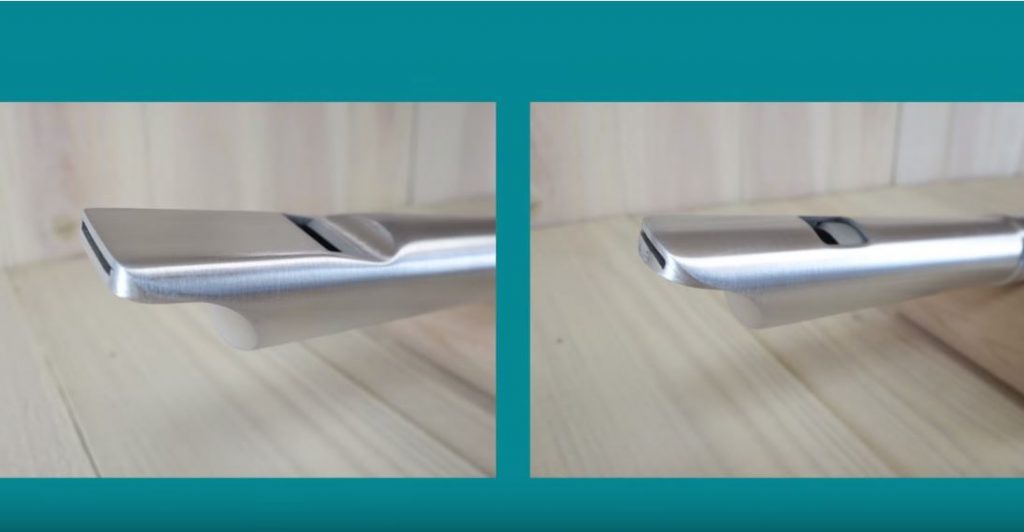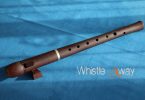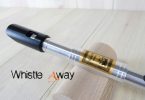The tin whistle is a simple, fascinating instrument. Using the same principle as any other wind instrument, it is used to produce folksy, country like tunes. They are ridiculously convenient in terms of moving around. You can pretty much carry them anywhere you go, they are low maintenance, easy to clean, take up next to no space in your space and they are affordable.
This article is a guide that looks to help you as a whistle player in choosing the best whistle for you.
Learning to play them is relatively easy. The notes are easy to remember and once you have mastered how to play them, you will be producing fantastic music in no time. They are surprisingly versatile and the tone they have is unique to the ear.
Like all good things, the whistle comes in a wide variety and has had many names in its lifetime. Some of these names may be familiar to you and you may not even realize it:
- Penny whistle.
- Tin whistle.
- High whistle.
- Low whistle.
- Belfast hornpipe.
- Irish whistle.
- Flageolet.
The differences are mostly categorized in the tune of the whistle, its country of origin and the type of material that has been used to make the whistle. Different people have different preferences. Plus, the prices also determine what kind of whistle you can get.
Before choosing which whistle to buy, it is important or you as the consumer to get the best education to simplify and specify your needs.
What Type Of Whistle Do I Want?

There are numerous variations in whistles. As a consumer, ask yourself the following questions. They help in guiding you when looking for that tune you want.
Tunable or Non-tunable?
- For the beginners, a non-tunable whistle is what is recommended. They are easy to get started with and are relatively cheaper.
- For the more professional players, a tunable whistle is recommended. This is especially if your intention is to play it along with other instruments or music.
Curved Windway or Straight Windway?
The windway is the place on the whistle where you place your lips as you play. When you look at the whistle head closely, you will find there are two shapes. A straight line, known as the straight windway, or a curved line that looks like a frown, known as the curved windway. In reference to Physics, a straight path produces a sharper, cleaner sound as opposed to a curved one. However, since we are musical, the focus for you should be the quality of sound you want. The sound produced is different so pick the one that works for you.
Conical Bore or Straight Bore?
Back in history, flutes used to have conical bores on them. The bores allow the whistle holes to be much closer and much smaller. It also helps with upper octave tunes. Over time, a man called Boehm discovered that an increase in the volume of air produces a tune that is clearer to the ear and is more powerful hence the straight bore.
Like the windway, remember the choice is on the type of sound you would want the whistle to produce.
What Type of Bore Material?
The bore is the body of the whistle. It can be made from a number of different materials. The thing to remember while on this is:
- How often you use the whistle.
- How often you will be cleaning it.
- The storage conditions depending on the material.
- The ease of the cleaning process.
- Ease and access to repair should it demand so.
- Allergies you might have to certain materials.
The material of the whistle also affects the sound of the whistle to some degree depending on the dimensions of the bore. Two identical whistles made by different materials do not produce the same sound. Softer materials such as plastic and wood have a surface that is more absorptive than hard material like tin or aluminum.
The following is a list for you as the player. The most common materials used in making whistles and their pros and cons in tow, just so you have enough information at hand.
Wood.
Wood has been used for centuries in making instruments, especially wind instruments, due to its acoustic component.
It produces superb sound.
Bad thing is, it is very sensitive to any type of moisture and humidity. This can affect its playability and tuning. The moisture it gets when playing does not help with its nature. It might rot or have growth of some kind if stored damp.
Tin.
The very first penny whistles from Clark were made from tin.
It is cheap and sort of overlooks design perfections in its acoustics.
It has acoustic properties that are not as exciting to a player.
Carbon fiber.
This material was very expensive a while back but with its use increasing, it has become more affordable to make even more items with it.
It is extremely hard and resilient and can be shaped easily.
It is expensive to obtain.
Aluminum.
This is a relatively new material that is being used to make whistles.
It is a soft metal and hence really light in weight. It produces a sound that is strong while being mellow as well.
This type of flutes however sound quite inert and not as loud. It also reacts to saliva and brings about some health questions in mind. It also corrodes over time in the head and the body, with the corrosion appearing as a white layer.
Plastic.
This might be the cheapest of the options when it comes to materials.
It is cheap and its whistles produce a mellow sound. It has acoustics that overlooks imperfections in design and can be designed in any way. They are easy to clean and are very low maintenance.
Their acoustics only add some ‘color’ to the sound and the body is not resonant in any way.
Brass.
This material has been used from centuries ago because it possesses great resonant properties.
It produces wonderful sound and a smooth I internal finish helps in its acoustics.
However, it may be heavy I made with a thick wall and it tarnishes if it was unfinished brass.
So Now What –Which Whistle is the Best One For Me?
After you have narrowed down the features you want in your whistle, how about we do some shopping now? This is a list of the top whistles and best whistle brands that are in the market today. It includes a little description for you so you don’t just choose based on the name or how it sounds like to you.
Cocobolo Wooden Penny Whistle by Erik the Flutemaker
The name itself is interesting. It comes from the wood used to make the whistle. It gives smooth, warm tones and provides a versatile range of keys. It is tuned in key D but can be played in G, E and B major.

Cocobolo Pennywhistle D:
D major – G major – B minor- E minor
Waltons Cheap Irish Tin Whistle
This is one of the easier ones to play. It is great for beginners as it comes with a CD and an instruction manual. It comes in the key D and produces warm, mellow tones.

Waltons have established themselves as the best-selling tin whistles in Ireland. This whistle is made from good quality materials and produces great sound. It is very affordable and comes in the key D. The light aluminum it is made of makes it durable and the black color it has just made it look good.

Clarke Celtic Tin Whistles for Beginners
This is one of the most common whistles and it comes in the key of D. It has great sound and is home made. It comes with a chart that you can use to learn fingering and some tunes from England.

Easy to play
Comes with its own fingering chart and five traditional Celtic tunes, one each from Wales, Scotland and Brittany and two from Ireland
Comes decorated with a Celtic Knot and is individually gift boxed
Handmade in the U.K.
Yet another high quality product from Clarke. It is designed very well, especially its mouthpiece. This type produces a very rich, unique tone that is very clear.
This is for when you want to stand out. Clarke already has a reputation for producing good whistles and this is no exception. It is great for all types of beginners and is easy to play.

Key of D
One of our most popular whistles!
Made of tin
Wooden fipple (mouthpiece), giving it a warm, flute-like tone
Handmade in the U.K.
Feadog Pro Affordable Tin Whistle for Beginners
This is another type of whistle that is worth the price. It is easy to lay since it has simple fingering. It produces a warm, high-quality tone. It comes in a classic silver-grey body with a black mouthpiece. They can give chirpy and sweet tones, almost bird-like.
Woodi Irish Whistles – Set of 2 for Beginners
This whistle is affordable and produces very clear sound. There is the Woodi WI-921W, which is wonderful for beginners and comes in the key C or D. There is also the Woodi WI-922W available in the same keys. It is made of two pieces thus easier to tune. Its construction ensures strength and durability. The two flutes come as a package so it’s almost like a two for one deal.
As an alternative you can have a look at the Generation Nickel Whistle
It is common and affordable. It looks kind of like a pen hence attracts many people. It has high notes and bright tones. It has great grip, shiny and feels good to the hand.
Chieftain Thunderbird Tuneable Low D Whistle for Intermediate
This is more of an upgrade whistle than a beginner whistle due to its quality and price.

As an upgrade-level model for the low whistle, it will do a good job. On this basis, it can make sense to switch to higher quality models later such as handmade Goldie, Burke, and MK made of the same metal. But for intermediate level, Chieftain /Thunderbird whistle is quite good. There are two different models, Chieftain and Thunderbird. The difference between Chieftain and Thunderbird Whistle is the following: The structure of the main body (body tube) is the same, but the outlet of the head tube is different. Chieftain is rounder and fits the mouth, and Thunderbird has a square mouth that resembles Goldie. There is no difference in the sound played.

Conclusion – Finding Whistle
Getting the right whistle for you is much easier now. All the information you may require is now at hand. Go out and get the best whistle for you. It might be the color or the price that you go for. Either way, go get your whistle and whistle away!







